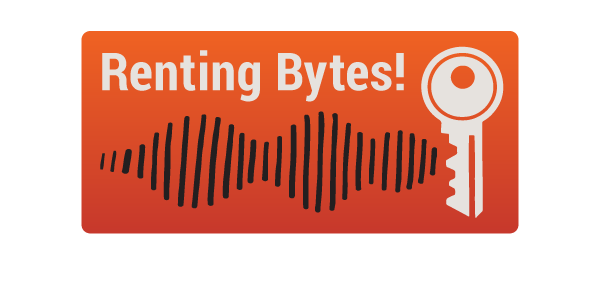Protected tenants infosheet
A small number of tenants of residential premises across New South Wales live in premises covered by the former Landlord and Tenant (Amendment) Act 1948 (‘1948 Act’). They are known as ‘protected tenants’. Unlike most tenants, they are not covered under the main provisions of the Residential Tenancies Act 2010 ('2010 Act') because of Section 7(a) of the 2010 Act.
Get advice
A tenant should get advice before asserting that he or she is a ‘protected tenant’. For free tenancy advice, contact your local Tenants Advice and Advocacy Service –see contact details at the end of this infosheet.
Who are protected tenants
‘Protected tenant’ is a colloquial term for a tenant who (i) lives in ‘prescribed premises’, as defined under ‘Definitions’ in Schedule 2 (‘Savings Provisions’ Part 7 (‘Provisions consequent on enactment of Fair Trading Legislation Amendment (Miscellaneous) Act 2018’) of the 2010 Act, and (ii) enjoys the full provisions of this Act. A ‘statutory protected tenant’ is a colloquial term for a person who has ‘like-rights’ to a protected tenant, usually a surviving spouse or child.
No-one knows how many protected tenancies remain, but in 2022 their number is small. They are found in older suburbs where many residents rented until gentrification gobbled up that suburb, or in country towns where no-one worried about paperwork in the good old days.
There must be no 5A leases (type of lease referred to in the 1948 Act) on the premises registered after 1 January 1969 with (the predecessor of) NSW Fair Trading. No new protected tenancies have been created since 1 January 1986 (section 5AA).
So, in order to be a possible protected tenant, a tenant must have rented their home continuously since then. The chances of being a protected tenant increase dramatically if he or she has rented their home continuously since 1 January 1969. Consequently, most protected tenants are getting on in years.
The Crown – including Department of Communities and Justice (DCJ) Housing and Aboriginal Housing Office – is exempt from the 1948 Act (Section 5).
Flagging a possible protected tenant
Here are a few pointers:
- an older person
- tenant or occupant of same house or flat and moved in before 1 January 1986
- tenant lives in a house or a flat built before 16 December 1954
- if a flat, the building was divided into flats before 1 January 1969
- tenant is paying a rent substantially below market rent
- tenant talks about signing a '17A Agreement'
- the premises are in substantial disrepair
Typically, a protected tenant is an elderly person living in a house falling down around them.
To ascertain if a tenant is a protected tenant, contact your local Tenants Advice and Advocacy Service. Their Tenants Advice and Advocacy Service will help them to clarify their status with the assistance of the Tenants’ Union of NSW. Sometimes only the NSW Civil and Administrative Tribunal or a court can say with any certainty if a tenant is a protected tenant.
The 1948 Act
The 1948 Act was repealed on 1 July 2019. The bulk of the 1948 Act has been incorporated into Part 7 of Schedule 2 of the 2010 Act. This states that the 1948 Act continues to apply to ‘prescribed premises’, defined as premises to which the 1948 Act applied immediately before its repeal.
The rights of a protected tenant
A tenant of ‘prescribed premises’ has rights that differ significantly from other tenants who are covered by the 2010 Act. These rights are outlined below.
Enjoyment of the premises:
The landlord must not interfere with the tenant’s enjoyment of the premises, including through an act of omission (Section 81). It is illegal to lock out a protected tenant. Penalties, including imprisonment, apply to breaches of the Act (Section 95).
Access:
After giving 7 days’ written notice, the landlord can visit the premises twice a year between 8am and 8pm on a weekday at a time when the tenant is normally home in order to view the condition of the premises. After giving reasonable notice, the landlord can visit to do repairs. (Section 88D)
Rent increase:
A landlord is only able to increase rent if the tenant agrees to this. A tenant does this by signing a ‘17A Agreement’ that is registered with NSW Fair Trading. If the tenant does not agree to the rent increase, the landlord may apply to the Fair Rents Board for a rent increase. (Today the Fair Rents Board is a magistrate sitting as such (Section 12 (2).) If a rent has never been set on the premises by one of these two methods, then the rent that the tenant is paying is the legal rent.
A landlord can apply to the Fair Rents Board to have the rent determined at ‘current rental value’ (like market rent) if the net annual income of the tenant exceeds the 'prescribed amount' (Division 4AA). The prescribed amount is calculated by multiplying the maximum fortnightly age pension (single rate) by 65. At 20 September 2022 this was $60,892 per annum.
A rent that satisfies the provisions of the 1948 Act is called a ‘fair rent’. If the tenant has paid rent exceeding the fair rent, he or she may apply to the Local Court for an order recovering from the landlord any excess rent for the last 6 years. (Section 35 (2) and (3))
Repairs:
The 1948 Act does not require a landlord to do repairs. And, there are landlords who refuse to do repairs. Nevertheless, if the Fair Rents Board recently increased the rent and allowed a figure for repairs (that were never done), the tenant may apply to the Fair Rents Board for a reduction in rent by this amount. The tenant also might argue that failure to do repairs constitutes an interference with their enjoyment of the premises (Section 81).
A tenant may also complain to their local government council, who have powers under the Local Government Act 1993 and Environmental Planning and Assessment Act 1979 to place an order on the owner to do certain types of repairs. A tenant should seek advice before contacting their council, as the council also has the power to ask them to leave if the premises have deteriorated to a point where it poses a danger to their health and/or safety.
Death of the tenant:
Up until 1 July 2019, death of a protected tenant did not take the premises out of the 1948 Act. A spouse (or de facto partner) or child on the pension, who lived with the protected tenant at the time of their death, had ‘like-rights’ to the protected tenant. They are known as ‘statutory protected tenants’. However, upon the repeal of the 1948 Act, the succession rights of children cease. Also, the death of the protected tenant or spouse (whichever occurs later) will take the premises out of the 1948 Act. Nevertheless, the status of existing ‘statutory protected tenants’ at 1 July 2019 – those who are children of a deceased protected tenant – has not changed: that is, their situation is 'grandfathered'. This is supported by the High Court ruling in Mathieson v Burton [1971] HCA 4 and the fact that NSW Parliament intended that elderly tenants who still have a legitimate claim under the 1948 Act at the time of its repeal will continue to be able to reside in their homes.
With the repeal of the 1948 Act death of the tenant does not terminate the tenancy, but takes the premises out of the 1948 Act and places those same premises under the main provisions of the 2010 Act, because Section 7(a) of this Act no longer applies. A death certificate will be evidence of the time of death. Persons who occupied the premises with the protected tenant (or their spouse) at the time of the latter's death (including a child) may apply to the NSW Civil and Administrative Tribunal under Section 77 of the 2010 Act for an order vesting a tenancy over the residential premises in the occupant. This arises because a 'lease' that existed in a protected tenancy is a 'residential tenancy agreement', as referred to in Section 77 of the 2010 Act. For more information about death of the tenant under the 2010 Act see ‘Death of a Tenant’.
Occupants who successfully apply in the Tribunal for a tenancy over the premises may face substantial rent increases when the rent of the prescribed premises was well below market rents. This might occur either at the time the Tribunal makes an order vesting the tenancy in the occupant, or at a later date with the serving of a valid notice of rent increase. However, the former process may provide some security for the occupant if they convince the Tribunal Member to include 'terms of the previous residential tenancy agreement as the Tribunal thinks appropriate' (Section 77 (3) (a)).
Eviction:
If the landlord wants to evict a tenant, he or she must serve a ‘Notice to Quit’ specifying one of the 27 grounds that are spelt out in Section 62 (5) of the 1948 Act. In most situations, the minimum period of notice is 30 days or 14 days if the ground for eviction alleges a fault of omission by the tenant. The most common grounds are ‘(m): The premises are reasonably required by the landlord for reconstruction or demolition’ and ‘(w): The tenant’s means – together with the means of anyone ordinarily residing in the premises ... are such that it is reasonable that the tenant and any other person would acquire or lease other premises’. Sale of the house is not one of those grounds.
A protected tenant may negotiate a settlement and enter into a deed to vacate premises with the approval of the Fair Rents Board, as permitted under Section 36 (1) (a) of the 1948 Act. Such a situation generally arises when the landlord indicates that he or she is keen for the tenant to leave and the tenant, often after varying degrees of harassment and much soul searching, agrees to vacate in return for payment of a lump sum payment.
As stated above, with the repeal of the 1948 Act, the death of the protected tenant (or their spouse, whichever occurs last) takes the premises out of the 1948 Act. A landlord may follow one of two procedures, should he or she wish to obtain possession of the premises:
- serve a termination notice and, should vacant possession not be given, apply to the NSW Civil and Administrative Tribunal for a possession order, as set out in Section 108 (‘Death of tenant’) of the 2010 Act, or
- the procedures set out in Section 94 (‘Termination of long term tenancies’) of the 2010 Act.
The legal personal representative of the tenant also may serve a termination notice and, should vacant possession not be given, apply to the NSW Civil and Administrative Tribunal for a possession order, as set out in Section 108 (‘Death of tenant’) of the 2010 Act.
Sale of dwelling house:
Section 88A states that a dwelling-house which is occupied by a tenant and being the only premises comprised in the sale or agreement for sale is not to be sold unless, firstly, the tenant is given opportunity to purchase.
Further information
- Combined Pensioners and Superannuants Association of New South Wales, ‘A Guide to Protected Tenancies in New South Wales’, 4th Edition, June 2014
- Contact your local Tenants Advice and Advocacy Service
Infosheet updated 12 October 2022




